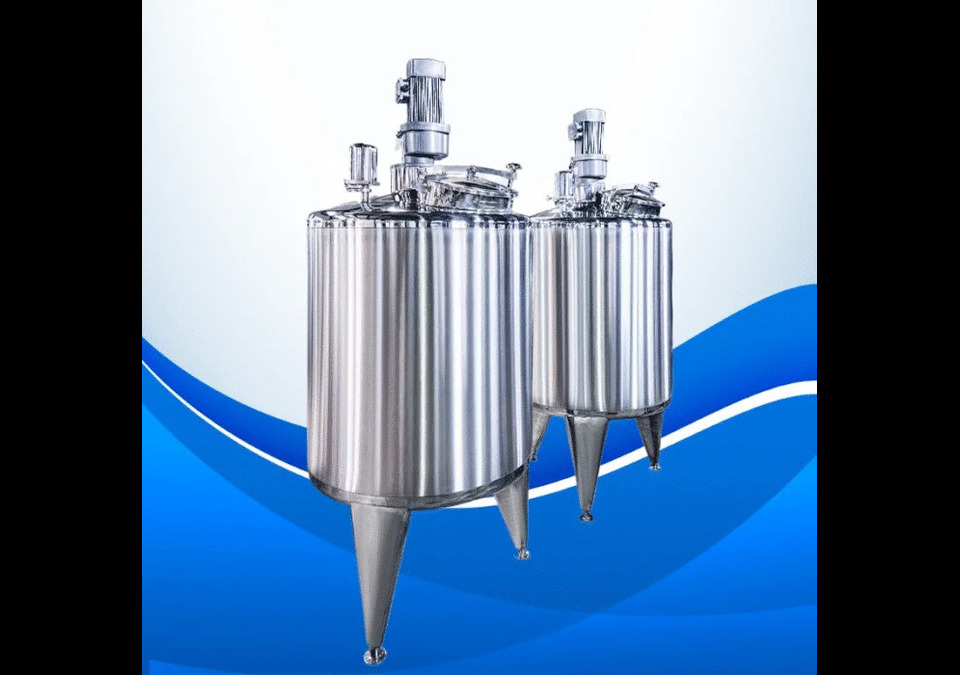
Mixing Tank Materials Compared: Why Stainless Steel Wins Every Time
Industrial mixing operations form the backbone of countless manufacturing processes across pharmaceutical, chemical, food processing, and biotechnology industries. The choice of mixing tank material directly impacts product quality, operational efficiency, and long-term cost effectiveness. While various materials compete for attention in the marketplace, stainless steel consistently emerges as the superior choice for industrial mixing applications.
The selection of appropriate mixing tank materials requires careful evaluation of multiple factors including chemical compatibility, durability, maintenance requirements, and regulatory compliance. Manufacturing facilities that make informed material choices early in their planning process avoid costly retrofits and operational disruptions down the line.
Understanding Core Material Options for Industrial Mixing
Traditional Steel and Iron-Based Solutions
Carbon steel represents one of the most economical options for mixing tank construction. These tanks offer adequate strength for many applications and provide reasonable initial cost benefits. However, carbon steel suffers from significant corrosion vulnerabilities when exposed to moisture, acids, or aggressive chemical environments. The material requires extensive protective coatings and frequent maintenance to prevent rust formation and structural degradation.
Cast iron mixing tanks share similar cost advantages with carbon steel but present even greater brittleness concerns. While cast iron demonstrates good compression strength, its susceptibility to cracking under thermal stress makes it unsuitable for applications involving temperature fluctuations or high-pressure operations.
Plastic and Polymer-Based Alternatives
High-density polyethylene (HDPE) and polypropylene tanks have gained popularity in certain mixing applications due to their chemical resistance and lightweight properties. These plastic materials resist many corrosive substances and eliminate concerns about metal contamination in sensitive processes.
However, plastic mixing tanks face significant limitations in temperature tolerance and structural integrity. Most polymer materials cannot withstand the elevated temperatures common in industrial mixing processes. Additionally, plastic tanks may absorb odors and flavors over time, making them unsuitable for food and pharmaceutical applications where product purity is critical.
Stainless Steel Advantages in Industrial Mixing Applications
Superior Corrosion Resistance Properties
Stainless steel mixing tanks demonstrate exceptional resistance to corrosion through their chromium content, which forms a protective oxide layer on the surface. This passive film regenerates automatically when damaged, providing continuous protection against rust and chemical attack. Grade 316L stainless steel, commonly used in mixing tank construction, contains molybdenum additions that enhance resistance to chloride corrosion and pitting.
The corrosion resistance of stainless steel eliminates the need for protective coatings that can chip, peel, or contaminate mixing processes. This inherent protection maintains tank integrity even when processing aggressive chemicals or operating in harsh environmental conditions.
Exceptional Temperature Performance
Industrial mixing operations frequently require heating or cooling cycles that would damage lesser materials. Stainless steel mixing tanks maintain structural integrity across temperature ranges from cryogenic conditions to several hundred degrees Celsius. This temperature stability allows for versatile processing capabilities without material degradation concerns.
The thermal conductivity properties of stainless steel also support efficient heat transfer during mixing operations. This characteristic reduces energy consumption and provides better temperature control throughout the mixing process.
Hygiene and Cleanability Standards
Surface Smoothness and Contamination Prevention
The smooth, non-porous surface of stainless steel mixing tanks prevents bacterial growth and contamination buildup. Unlike materials with rough or textured surfaces, stainless steel can be polished to extremely smooth finishes that resist particle adhesion and facilitate thorough cleaning.
Food processing and pharmaceutical industries require mixing equipment that meets strict sanitary standards. Stainless steel surfaces can achieve the mirror-like finishes necessary for applications where product contamination could have serious health or quality consequences.
Cleaning and Sterilization Compatibility
Stainless steel mixing tanks withstand aggressive cleaning agents and sterilization procedures without surface damage or degradation. The material resists attack from caustic cleaning solutions, acids, and high-temperature steam sterilization processes commonly used in industrial facilities.
This compatibility with intensive cleaning protocols ensures that mixing tanks can be thoroughly sanitized between batches, preventing cross-contamination and maintaining product quality standards. The durability of stainless steel under repeated cleaning cycles reduces replacement costs and operational downtime.
Long-Term Economic Benefits
Durability and Service Life Considerations
While stainless steel mixing tanks require higher initial investment compared to some alternatives, their extended service life provides superior value over time. Properly maintained stainless steel tanks can operate effectively for decades without significant degradation or performance loss.
The structural integrity of stainless steel withstands the mechanical stresses of mixing operations, including vibration, pressure changes, and agitator loads. This durability reduces the frequency of tank replacement and minimizes production interruptions caused by equipment failure.
Maintenance Cost Reduction
Stainless steel mixing tanks require minimal maintenance compared to coated steel or plastic alternatives. The absence of protective coatings eliminates repainting or recoating expenses, while the corrosion resistance prevents structural repairs caused by rust or chemical attack.
Routine maintenance typically involves only cleaning and inspection procedures, rather than the extensive preventive measures required for materials susceptible to degradation. This reduced maintenance burden translates to lower labor costs and improved equipment availability.
Regulatory Compliance and Industry Standards
Food and Drug Administration Requirements
Mixing tank applications in food processing and pharmaceutical manufacturing must comply with FDA regulations regarding materials in contact with consumable products. Stainless steel grades 304 and 316L are specifically approved for food contact applications and meet FDA requirements for non-toxicity and non-reactivity.
The FDA recognition of stainless steel eliminates regulatory hurdles and ensures that mixing tank installations will pass inspection requirements. This compliance reduces the risk of production shutdowns or product recalls due to material-related violations.
International Quality Standards
Stainless steel mixing tanks readily meet international quality standards including ISO certifications and European Union regulations for food contact materials. This global acceptance facilitates international trade and ensures compatibility with worldwide manufacturing standards.
Companies operating in multiple countries benefit from the universal acceptance of stainless steel, avoiding the need for different tank materials in different regions based on varying regulatory requirements.
Conclusion
The comparison of mixing tank materials consistently demonstrates the superiority of stainless steel across critical performance metrics. While initial costs may exceed those of alternative materials, the combination of corrosion resistance, temperature tolerance, hygiene properties, and durability provides unmatched long-term value.
Industrial facilities seeking reliable, cost-effective mixing solutions should prioritize stainless steel tank construction. The material’s proven track record across diverse industries, regulatory compliance, and minimal maintenance requirements make it the optimal choice for serious manufacturing operations. When evaluating mixing tank materials, the evidence clearly supports stainless steel as the winning solution for industrial mixing applications.


